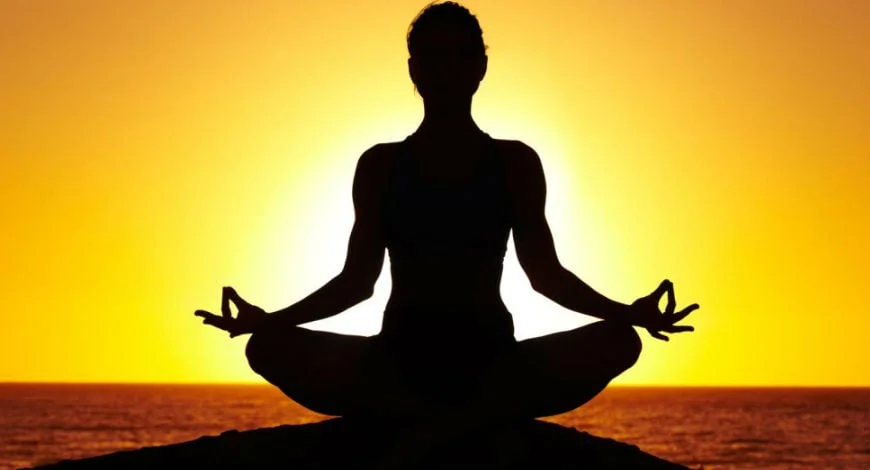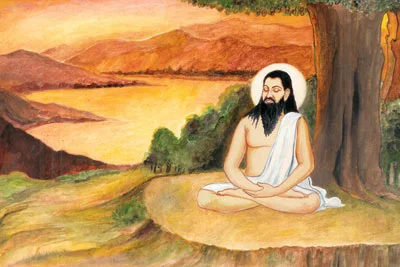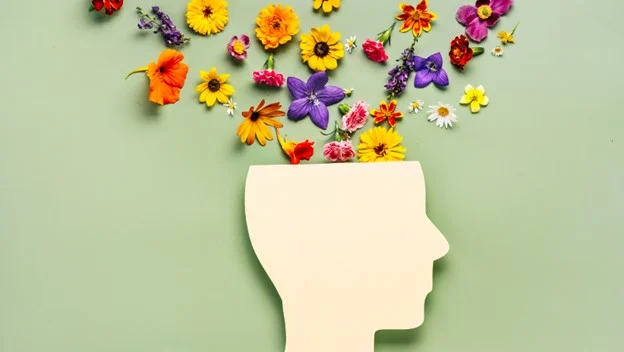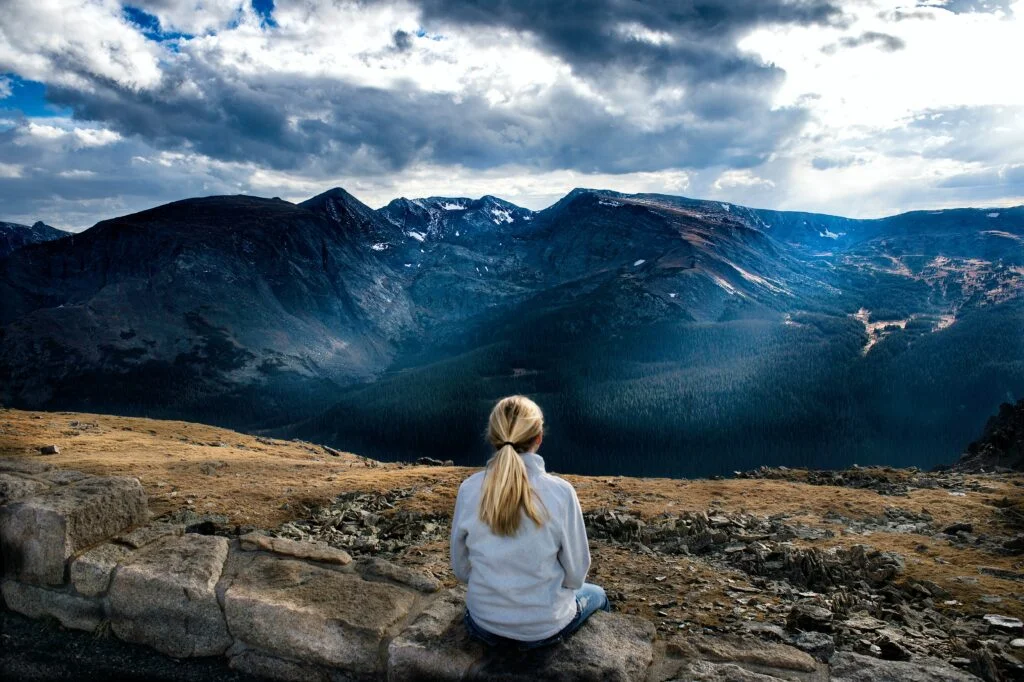
Yoga originates from the Sanskrit root yuj, meaning “to unite” or “to yoke”. It is a practice that seeks to unite the physical, mental, and spiritual selves and human awareness—practiced for thousands of years with the ultimate aim of separation from suffering. Patanjali’s Yoga Sutras contain the foundational text of yoga. In the modern context, yoga is often associated with challenging body postures and activities. However, in the true sense, it is the union of mind, spirit, and body.
Over 300 million people practice yoga worldwide. In addition, India is home to roughly half of all yoga practitioners. It stands as India’s offering to the world and represents the pinnacle of India’s soft power. Enhancing mental, physical, and spiritual equilibrium, it transcends cultural boundaries, fostering unity among nations, cultures, and communities. Its influence extends to millions globally, leaving a profound impact on people’s lives worldwide.
When describing the uniqueness of yoga, one of the most well-known Sanskrit poets of the past centuries, Bhartrhari, said:
धैर्यं यस्य पिता क्षमा च जननी शान्तिश्चिरं गेहिनी
सत्यं सूनुरयं दया च भगिनी भ्राता मनः संयमः।
शय्या भूमितलं दिशोSपि वसनं ज्ञानामृतं भोजनं
एते यस्य कुटिम्बिनः वद सखे कस्माद् भयं योगिनः।।
This means that by consistent yoga practice, one can acquire virtues like courage, which serves as a protector like a father, forgiveness like a mother, and mental serenity, which serves as a constant companion. Regular yoga practice transforms truth into our child, mercy into our sister, self-control into our brother, the soil into our bed, and knowledge into the filling of our hunger.

Yoga: From Ancient India To The World
In 1893, Swami Vivekananda, a monk from Calcutta, brought yoga to the global stage. He spoke at the World Parliament of Religions in Chicago, addressing topics such as Yoga, India, and Hinduism. He later established Vedanta centers throughout the US. In 1896, he authored a book titled “Rama Yoga,” which saw its publication in New York City. From there the book found its war in Europe and yoga spread with it. The famous music band The Beatles also played a role in the spread of yoga.
In recent times, since Indian Prime Minister Narendra Modi took office in 2014, India has been actively pushing yoga as a vehicle for cultural diplomacy. PM Modi, himself a yoga practitioner, has taken several actions to promote knowledge and appreciation of yoga throughout the world.
In September 2014, the UN General Assembly introduced the International Day of Yoga, garnering overwhelming endorsement from 175 nations. It was first observed on June 21, 2015. Since then, Indian Embassies, Consulates, and Cultural Institutions worldwide have hosted millions of people in large-scale yoga sessions, workshops, seminars, and other cultural events on June 21.
“Yoga is an invaluable gift of India’s ancient tradition. It embodies unity of mind and body; thought and action; restraint and fulfillment; harmony between man and nature; and a holistic approach to health and well-being. It is not about exercise but about discovering the sense of oneness with yourself, the world, and nature. Changing our lifestyle and creating consciousness, can help in well-being. Let us work towards adopting an International Yoga Day.”
— Narendra Modi, UN General Assembly

Worldwide Recognition
International Yoga Day has been a success, not only in India but on the global stage too. The primary event of International Yoga Day in 2017 took place in Times Square, where a large number of yogis gathered to practice together. With 153,000 attendees, the Yoga Day event 2023 in Surat, Gujarat, set a new Guinness World Record for the biggest yoga session attendance. Yoga classes were also held at Himadri in the Arctic and Bharati in Antarctica, demonstrating its reach.
The Yoga Certification Board was established in 2019 which is a governmental organization with the mission to standardize and control the caliber and authenticity of yoga teaching and training in India and internationally. The International Yoga Festival is organized yearly in Rishikesh. The World Health Organization’s Global Strategy on Traditional and Complementary Medicine 2014–2023 acknowledges yoga as a secure and reliable traditional medical modality that can help promote universal access to healthcare.
In the United States, there are more than 37 million yoga practitioners. In Canada, yoga is practiced by 21% of the population, while in the Netherlands, 30% of individuals participate in yoga or mindfulness meditation. Over 10,000 yoga teachers teach more than 460,000 British yogis each week, according to statistics on yoga in the UK. Every year, interest in yoga increases by 73% in the UK.

Global Perception Of Yoga
The United Nations General Assembly declared June 21 as International Yoga Day. In its resolution, the UNGA endorsed that:
“Yoga provides a holistic approach to health and well-being apart from striking a balance between all aspects of life. The wider dissemination of information about the benefits of practicing Yoga would be beneficial for the health of the world population.”
For different people around the world, yoga serves a variety of diverse goals. All yoga practitioners share the aim to enhance their happiness and well-being through this age-old and proven technique, though.
A poll found that 59% of yoga practitioners in the US think that yoga helps them sleep better. Yoga enjoys common practice throughout Europe, with a notable presence in nations like Germany, France, and the UK. It is perceived to encompass physical, mental, and emotional components, forming a holistic approach to well-being. 10% of respondents in Germany claim to frequently practice yoga, while 44% say they are curious to give it a try. From 2012 to 2017, yoga in Japan saw a phenomenal 413% growth rate.
Yoga is becoming more and more well-known internationally, and as a result, a large number of visitors travel to India in search of authentic yoga experiences. Foreign tourists frequently settle down in locations like Rishikesh and start practicing yoga. These tourists participate in yoga retreats, workshops, and teacher training courses, boosting the local economy. India’s popularity as a yoga destination encourages business, boosts job growth, and improves the travel and tourism sector.

Yoga A Soft Power Tool
The use of India’s cultural and spiritual history to improve its reputation and influence abroad is its soft power diplomacy. Yoga has a powerful ability to promote cross-national communication, bridge-building, and cultural exchange. Globally acknowledged International Yoga Day strengthens India’s soft power, improving its reputation and opening doors for business collaborations. As part of its foreign policy goal, India wishes to promote ideals like wellness, mindfulness, harmony, and peace; yoga is considered a source of these things.
A 2020 Allied Market Research analysis estimates that the global yoga market brought in US$37.46 billion in 2019. According to a survey that examines both the online and offline yoga markets, this is anticipated to rise to US$ 66.22 billion by 2027, registering an annualized compound annual growth of 9.6% from 2021 to 2027. 40% of India’s wellness business, estimated at INR 499 billion, comprises solely yoga studios and fitness facilities.
The cultural and soft power of yoga are crucial to India’s economic diplomacy. Yoga has established itself as one of the top 10 fitness pursuits in the world. It has also significantly fueled the Indian economy, as evidenced by its contributions to several industries, such as tourism, hospitality, and the establishment of yoga centers that draw a wide range of international visitors. Observing International Yoga Day serves as a spark, inspiring individuals to commence their yoga practice. This, in turn, boosts attendance and income for yoga courses, particularly during the summer.

Commercial Growth of Yoga
Yoga’s commercial potential is growing, and it has a bright future ahead of it. Several industries, including tourism, hospitality, and wellness centers, have seen growth as a result. Over the years, well-known sportswear companies like Adidas and Nike have also made sizable investments in yoga apparel. Puma began promoting its yoga collection with the #YogaAnywhereEverywhere campaign in May 2022. The market for yoga apparel is currently $31.3 billion and is projected to expand at a compound annual growth rate (CAGR) of about 6%. The global yoga mat market is currently worth $13 billion and is expanding.
India wants to accomplish several goals by using yoga as a soft power diplomatic tactic, including:
- It is enhancing its standing as a nation with a multifaceted culture, a long history of knowledge, and a strong sense of spirituality.
- Fostering a holistic view of health and well-being that integrates body, mind, and spirit to combat issues like climate change, poverty, violence, and extremism.
- Demonstrating its multicultural society, which cherishes a variety of tolerance and democratic ideals.
- Strengthening its ties with other nations on a bilateral and multilateral basis based on respect and understanding.
- Fostering chances for business collaboration and partnerships in sectors like tourism, education, health care, the wellness sector, and cross-cultural exchange.
India aspires to gain international recognition for its moral code and cultural ethos. It perceives this recognition as a crucial step toward achieving the status of a Vishwa Guru or Universal Teacher. The overwhelming success of International Yoga Day is evidence of yoga’s ability to unite people and opens the door for India to stake its claim to moral leadership.
About the Author
Aman Bora

Aman Bora is currently a Ph.D. Candidate in the Department of Political Science of Soban Singh Jeena University Almora, Uttarakhand (India). He received his master’s degree in Political Science (Silver Medalist) form Kumaun University Nainital in Uttarakhand (India) and has passed the UGC-National Eligibility Test in Political Science subject. He is an ardent researcher and an inquisitive learner avidly interested in International Relations, Defense Studies, Geo-politics and topic related to National Interests.







READING ABOUT YOUR BLOG IS AN APPRECIATION FROM MY SIDE TO YOUR BLOG AS A VER LESS CONTENT ABOUT IT IS AVAILABLE ON INTERNET OU GAVE ME A WELL EXPLAINATION ABOUT IT WILL BE WAITING FOR YOUR NEXT BLOG